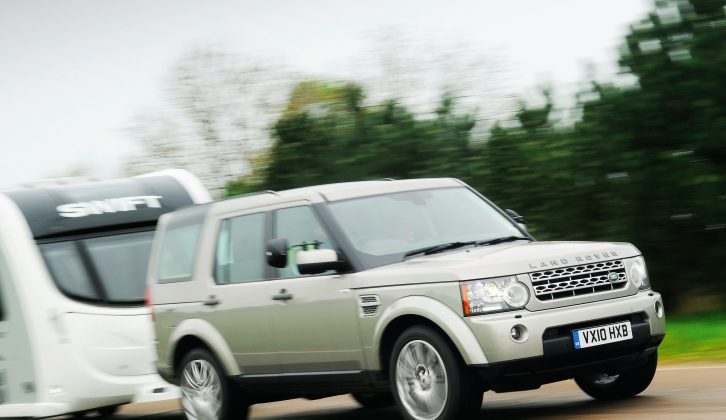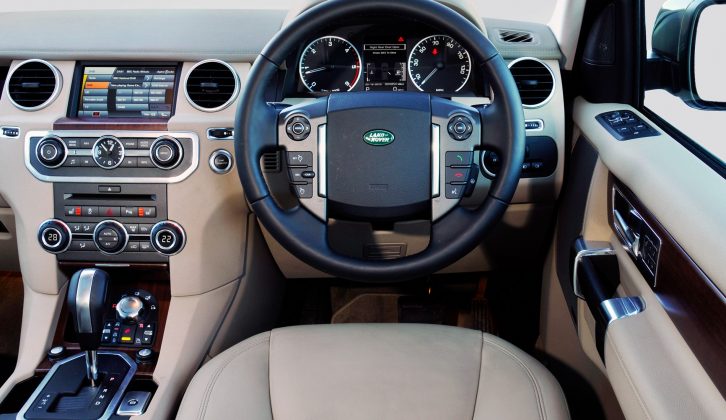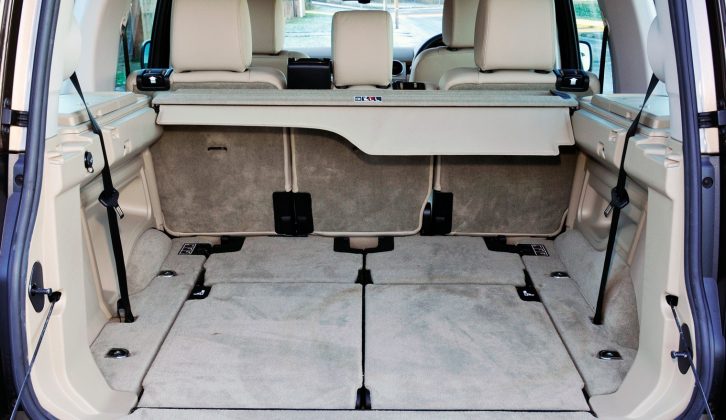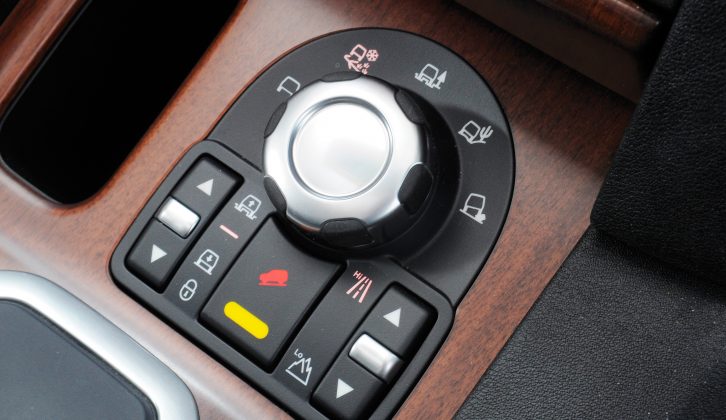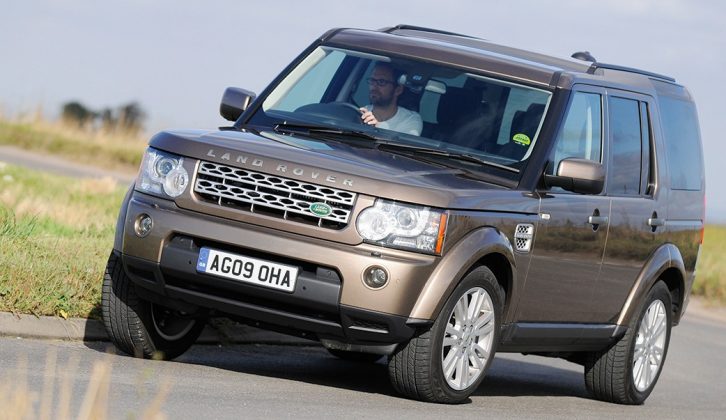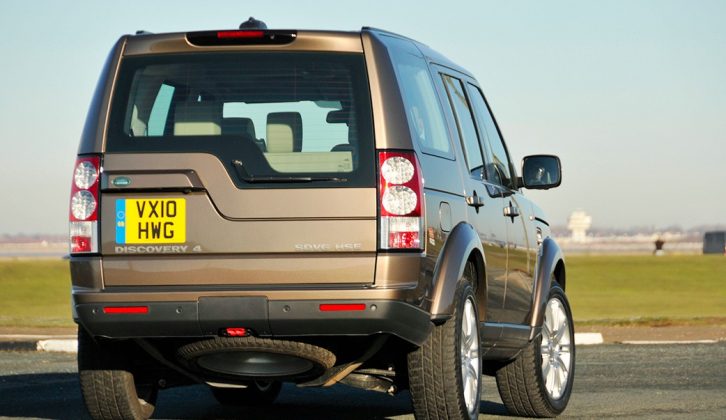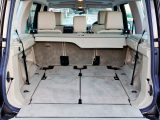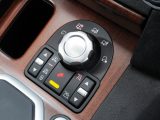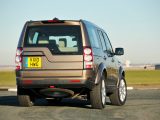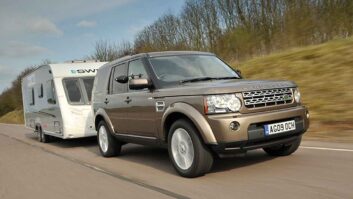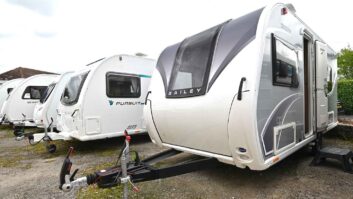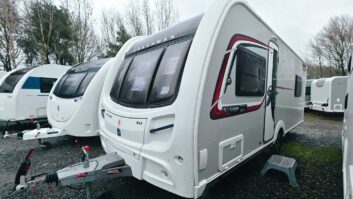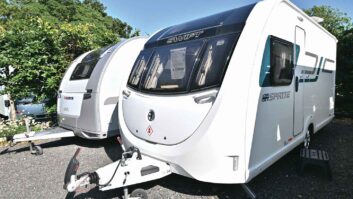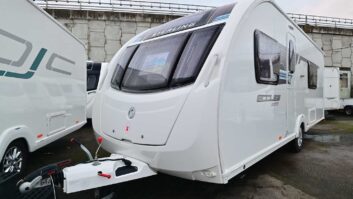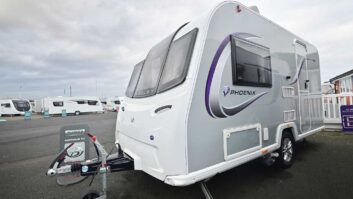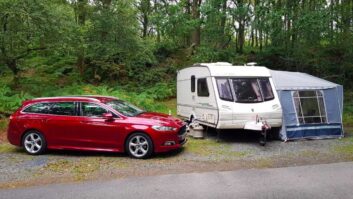What’s the best tow car? Well, at this year’s 10th Tow Car Awards, we crowned the Land Rover Discovery 4 our tow car of the decade, making it a contender for that ‘best tow car’ title.
It has proved time and again that it is an outstanding tow car and the judges were unanimous in their decision. And now it’s a car more people than ever can afford. With the arrival of the Discovery 5 due next year, the Disco 4 makes a cracking used buy – read on!
The Discovery was conceived as Land Rover’s best-of-all-worlds car. It offered close to the luxury of a Range Rover, while being more capable off- (and on-) road than a Defender.
All that was combined with every automotive gadget known to man. In fact, I’ll start by recommending that new owners set aside half a day just to read the owner’s manual and learn about all the things it can do and how to operate them.
Of course, the Discovery 3 offered all that, but in reality turned out to be not very reliable. It was prone to expensive problems, which largely came down to Land Rover using too much technology that the cars weren’t quite ready for.
The Discovery 4 is the result of eliminating all those issues and adding many other improvements. For a start, there was a larger diesel engine (up from 2.7 to 3.0 litres), which gave 36% more torque and almost 10% better fuel consumption. We all know what tow car ability the Discovery has, but is all that tech working? Let’s find out.
Model history
The Land Rover Discovery 4 was launched in September 2009. The body was the same as the previous model’s, but with a restyled grille and bumpers. There was also LED lighting and a completely redesigned interior.
Petrol engines were long gone – you had to buy a Range Rover for one of those – and most Discovery 4s came with the new 3.0 diesel with sequential twin turbochargers. That kicked out 241bhp and 442lb ft of torque.
However, there was also an entry-level GS model with the old 2.7-litre engine and just 187bhp and 324lb ft. Transmission choices were a six-speed manual or auto.
Even the GS was well equipped, with air suspension, a trailer-stability system, Terrain Response, roll stability control and five or seven seats. You do have to put up with cloth trim, though, and 18in alloys, while the 3.0s got 19in wheels.
XS spec added heated leather seats, cruise control, front park distance control, roof rails, sat-nav and a Harman Kardon nine-speaker stereo.
The expensive HSE trim got electrically adjustable ‘Windsor’ premium leather seats, a rear-view camera, keyless entry, one electric and two fixed glass sunroofs, bi-xenon headlamps, and other toys.
October 2011 brought a raft of improvements, including the revised 3.0 SDV6 engine, with an extra 10bhp and the same maximum torque, though that now kicked in from just 2000rpm. This was now attached to an eight-speed ZF automatic gearbox, which not only improved performance but also aided fuel consumption and lowered CO2 emissions from 244g/km to 230g/km.
Suspension was revised, bigger brakes were fitted and all models got Hill Start Assist. If you splashed out on the HSE, you got Timed Climate, which could be set to pre-warm the cabin and engine on a seven-day timer. Now that’s flash!
Trouble spots
Make sure you get full power when test driving any used Land Rover Discovery 4. If these engines aren’t regularly driven hard and, therefore, engaging the second turbo, it and the airflow flap and actuator can become sooted up and fail. Putting it right means the turbo has to come off, which isn’t an easy job and will result in a bill of at least £1500.
On earlier 3.0 TD engines, look out for oil leaks from around the front of the crankshaft – or a suspicious amount of recent cleaning up in that area. The solution means a new oil pump and crank seal – and a bill for around £850.
Gearboxes so far appear to be largely trouble-free, though based on experience with the Discovery 3, specialists are concerned about the nine-year/144,000-mile fluid-change intervals for the automatics. They feel this should be more like 75,000-90,000 miles, especially in cars that have done much towing, so be prepared to add that on to a service.
The steering should feel light and predictable. If it isn’t, the most likely cause is worn suspension bushes, and you can usually identify which by giving the brakes a quick tap while you’re driving. If you get a light clonk from the front it will be the lower suspension arms that are around £275 each, fitted. If it’s from the rear it will be the upper arms or anti-roll bar, which are much cheaper to sort out.
Electrics are proving better than in the Discovery 3, but check that everything works anyway, and beware of an erratic fuel gauge. It may not sound like much, but replacing the errant connectors that are causing the problem in the fuel tank and reprogramming the software can cost in excess of £250. And make sure you get all the keys – a replacement costs an eye-watering £300.
Verdict
It took four goes, but Land Rover came up with the goods with this version of the Discovery. The quality is there and everyone who has bought a Discovery 4 seems happy to sing its praises, particularly as a tow car. There are some grumbles about fuel consumption, but even with a big caravan on the back you’re likely to average in the mid-20s. Is this really that bad for something so practical that makes towing so easy in all conditions?
Our favourite model from the range is the 3.0 SDV6 XS. The SD engine is the best if you have the budget, and the XS has enough kit for most. The £3000 extra for the HSE is for stuff that you don’t really need.
However, we’d avoid the 2.7 TDV6 GS. It uses old technology, is less fuel efficient and, therefore, more expensive to run. We reckon it’s worth paying the extra £1000 for an equivalent Discovery 4 with the 3.0 engine.
What you need to know
Price-wise, you’re looking at about £12,800-£46,000. Land Rover Discovery 4s hold their value well, and even the cheapest GS models were £32,000-£34,000 new, so you’re unlikely to find anything costing much below £14,000.
Add another £2500 to that for XS starting prices, and a further £2000 to get enough for HSE trim. The best of the HSEs can still command £27,000 from a dealer for a five-year-old example. The SDV6 models are still above the £20,000 mark, say £21,000 for a private GS with average miles; add £3000 to step up to an XS and the same again for an HSE.
Here are some useful figures (for a 2011 Land Rover Discovery 3.0 SDV6 HSE):
- Kerbweight 2583kg
- 85% match 2196kg
- Towing limit 3500kg
- Towball limit 150kg
How much is a towball? According to quotes provided by PF Jones, a Witter flange tow bar will cost £172.80 to fit to a Disco 4 and a Thule Brink detachable tow bar will be £265, fitting extra. And what about servicing? A Discovery 3.0 TDV6’s interim service will come to £105.56 and a full service will be £166.46, according to Servicing Stop.
Make sure you get full power when test driving any used Land Rover Discovery 4
